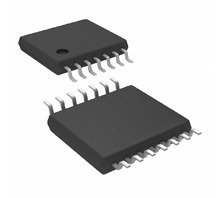Manufacturer Part Number
MAX9034AUD
Manufacturer
Analog Devices
Introduction
The MAX9034AUD is a low-power, quad, general-purpose linear comparator designed for a range of applications that require multiple comparison points.
Product Features and Performance
General Purpose Comparator
Four Independent Comparator Elements
Push-Pull, Rail-to-Rail Output Type
Supports Single or Dual Power Supply Operations
Low Input Offset Voltage
Minimal Input Bias Current
High Common-Mode Rejection Ratio (CMRR)
Excellent Power Supply Rejection Ratio (PSRR)
Fast Propagation Delay
Built-in Hysteresis for Stability
Capable of Operating in Wide Temperature Range
Product Advantages
High Accuracy with Low Voltage Offset
Ultra-Low Input Bias Current
Rail-to-Rail Output Enhances Dynamic Range
Low Power Consumption
High Integration with Four Comparators in One Package
Operational in Wide Temperature Ranges Making It Suitable for Industrial Applications
Key Technical Parameters
Number of Elements: 4
Voltage - Supply, Single/Dual (±): 2.5V ~ 5.5V
Voltage - Input Offset (Max): 1mV @ 5V
Current - Input Bias (Max): 0.008µA @ 5V
Current - Quiescent (Max): 55µA
CMRR, PSRR (Typ): 100dB CMRR, 100dB PSRR
Propagation Delay (Max): 228ns
Hysteresis: 4mV
Operating Temperature: -40°C ~ 125°C
Package / Case: 14-TSSOP
Mounting Type: Surface Mount
Quality and Safety Features
Robust Performance with Built-In Hysteresis
High CMRR and PSRR for Improved Noise Immunity
Extended Temperature Range for Reliable Performance Under Varied Conditions
Compatibility
Suitable for Use with a Range of Supply Voltages
Compatible with Surface Mount Technology
Application Areas
Multiple Sensor Interfacing
Threshold Detectors
Industrial Automation
Battery-Powered Electronics
Data Acquisition Systems
Telecommunication Systems
Product Lifecycle
Obsolete
Replacement or Upgrade Options May Be Limited Due to Discontinuation
Several Key Reasons to Choose This Product
Versatile Usage Across Varied Power Supply Voltages
Quad Comparators Offer Multi-Point Monitoring
High Precision with Low Input Offset and Bias Current
Fast Response Time with Low Propagation Delay
Low Power Consumption Ideal for Battery-Powered Devices
High Integration Reduces Footprint and Component Count in Circuit Designs
Can Withstand Demanding Industrial Environments Due to Temperature Range and Robust Features




 MAX9032AUA+Maxim
MAX9032AUA+Maxim MAX9032ASA+Analog Devices Inc./Maxim IntegratedIC COMPARATOR 2 GEN PUR 8SOIC
MAX9032ASA+Analog Devices Inc./Maxim IntegratedIC COMPARATOR 2 GEN PUR 8SOIC MAX9032AUA+TAnalog Devices Inc./Maxim IntegratedIC COMPARATOR 2 GEN PUR 8UMAX
MAX9032AUA+TAnalog Devices Inc./Maxim IntegratedIC COMPARATOR 2 GEN PUR 8UMAX MAX9031AXK+TAnalog Devices Inc./Maxim IntegratedIC COMPARATOR 1 GEN PUR SC70-5
MAX9031AXK+TAnalog Devices Inc./Maxim IntegratedIC COMPARATOR 1 GEN PUR SC70-5 MAX9032AKA+TAnalog Devices Inc./Maxim IntegratedIC COMPARATOR 2 GEN PUR SOT23-8
MAX9032AKA+TAnalog Devices Inc./Maxim IntegratedIC COMPARATOR 2 GEN PUR SOT23-8